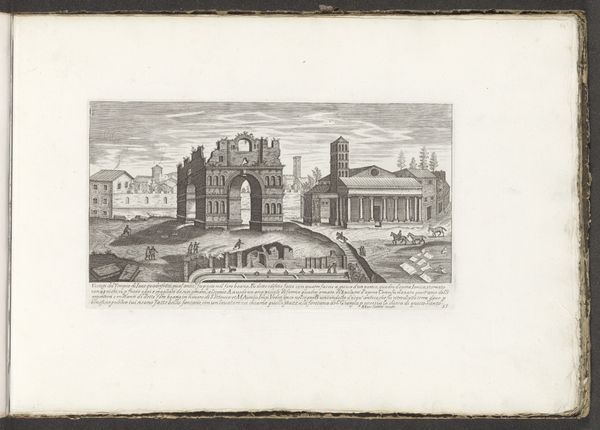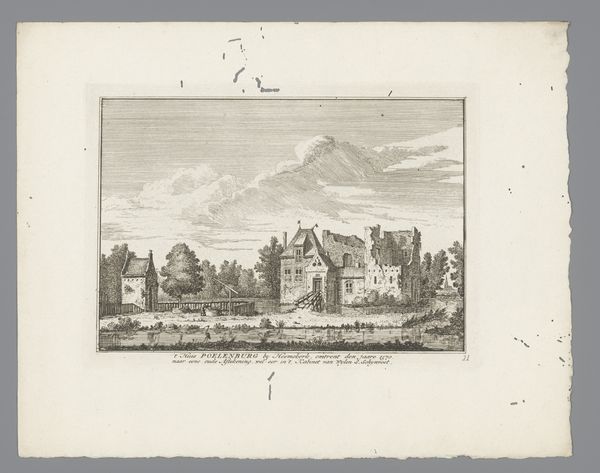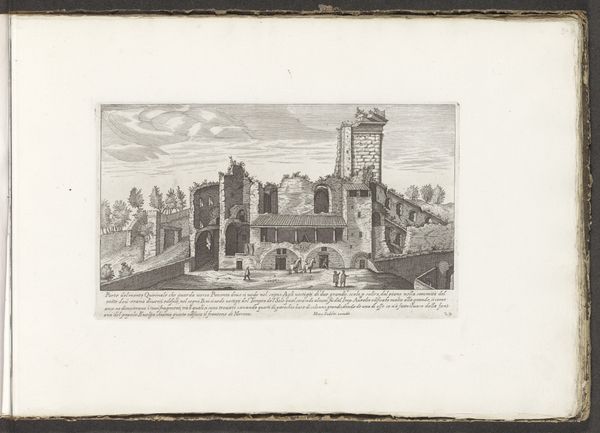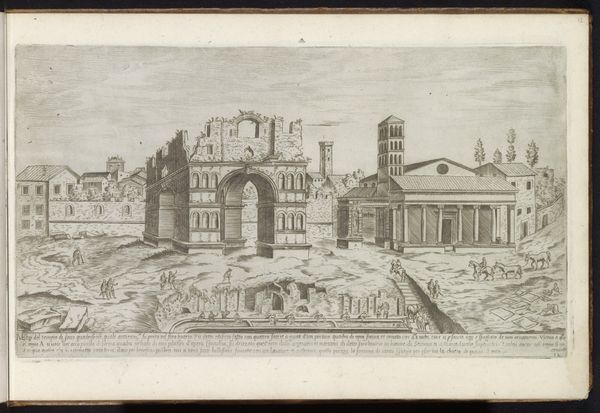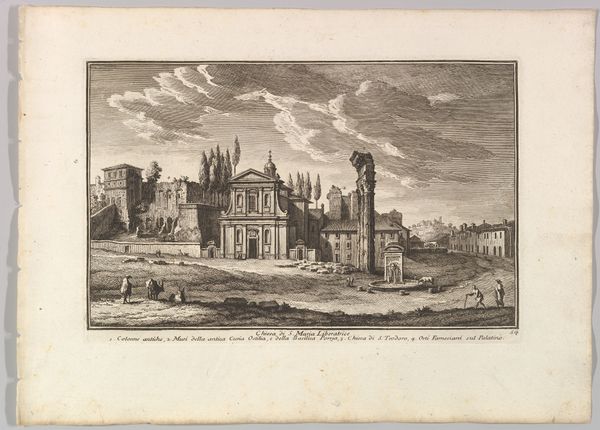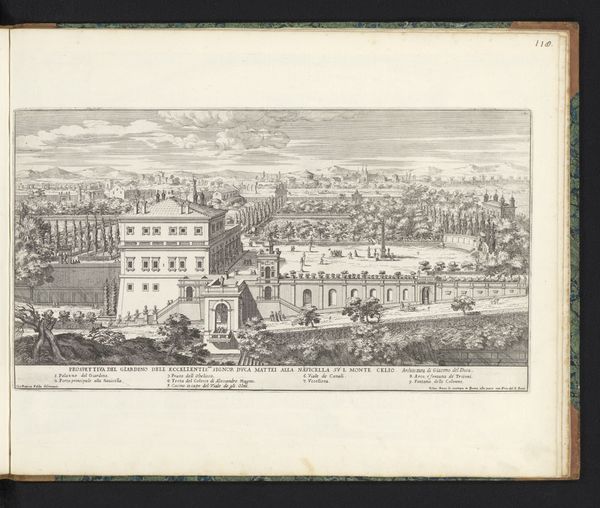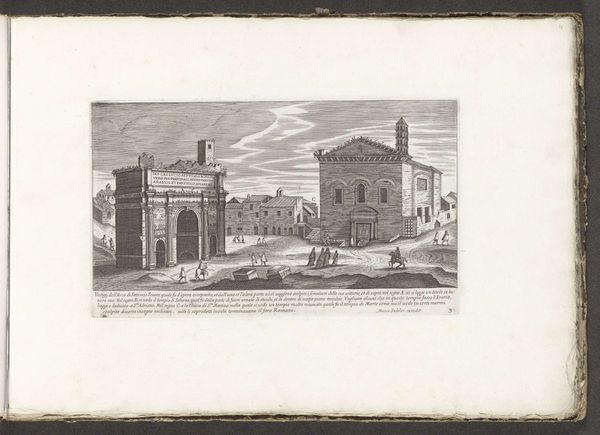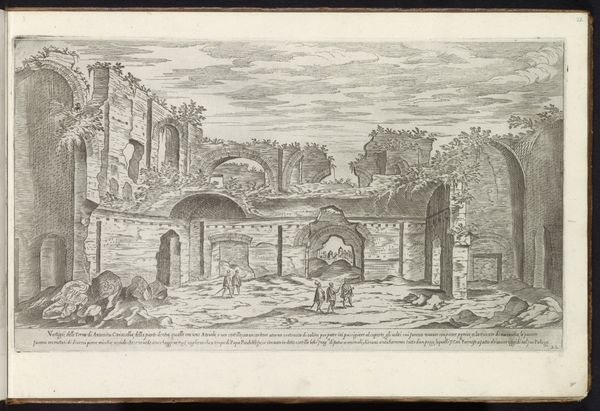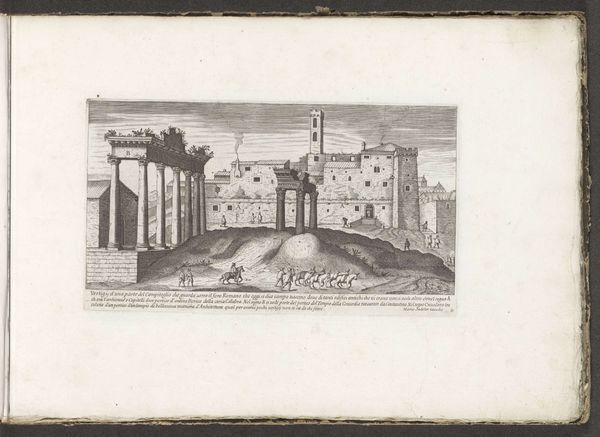
print, engraving
#
baroque
# print
#
landscape
#
cityscape
#
history-painting
#
italian-renaissance
#
engraving
Dimensions: height 150 mm, width 258 mm
Copyright: Rijks Museum: Open Domain
Curator: Look at the ruins; there is such a feeling of loss. Editor: Loss and grandeur intermixed. This print, made around 1680, shows the “Ruins on the Slopes of the Palatine Hill with the House of Augustus.” The stark line work of the engraving emphasizes the broken arches, the crumbling facade. It invites reflection. Curator: Indeed. See how the artist captures the Palatine Hill – once the vibrant center of Roman power? The ruins here evoke the cyclical nature of civilizations: birth, flourishing, decay. The figures strolling amidst the ruins seem dwarfed, almost incidental. Editor: Those figures, though small, serve to remind us of continuous habitation, of people re-interpreting and reusing history's leftovers. Their presence softens the somber mood a little, doesn't it? Makes it seem less like utter despair and more like adaptation. Curator: Possibly, but what symbols remain to these passersby? What’s left? Are the arches like mouths, now toothless? This place, once humming with the voices of emperors, is now a silent echo, open to wind and weather. Do the arches symbolize arches of triumph long crumbled? I see a ghostly narrative—it's the fall of civilizations, not necessarily their re-birth. Editor: That's valid. Perhaps our interpretations diverge because we prioritize different lenses – cultural memory versus social context. My eye is always drawn to the later acts of adaptation. You spotlight the lingering grandeur… I look at those structures today as symbols that, although crumbling, also still host political and cultural narratives to modern Italians and the global imagination of Rome. It can still inspire social action. Curator: I suppose both viewpoints have a place in understanding how we engage with the past through images. How we make meaning when looking at broken things. Editor: It gives you cause for optimism when looking at such a sight. Curator: The symbolic implications are undeniably vast, so one is easily pulled down a melancholy road... Editor: ... while still acknowledging that even these grand, fallen buildings still manage to stand—a place that allows the everyman to pass underneath the "mouth" once again.
Comments
No comments
Be the first to comment and join the conversation on the ultimate creative platform.

